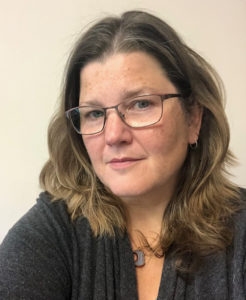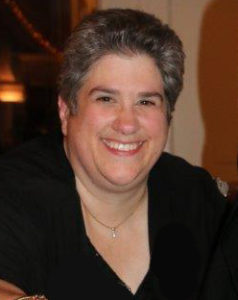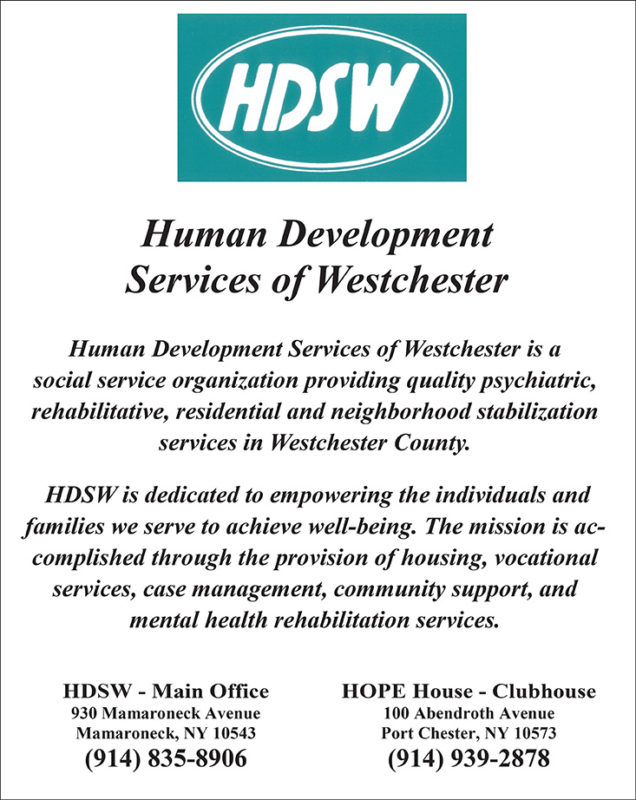Crisis in every form, including behavioral health, social, economic and medical, accompanies a pandemic. So what happens to face-to-face crisis services for vulnerable populations when needs are greater, access is more difficult, and social distancing and health risks turn already-fragile worlds upside down?

Kelly Darrow, LCSW

Kathy Pandekakes
The Living Room, a crisis day respite program of Human Development Services of Westchester (HDSW) in Mamaroneck, NY, is finding out. Already an innovative alternative to traditional crisis services, The Living Room has had to adapt, to be creative, and further extend its reach while faced with growing constraints on resources. Since opening our doors in July of 2017, we have provided over 12,700 hours of face-to-face services, and hours of telephone support. We have learned many things about guests’ needs and during this pandemic we continue to be as flexible as possible to provide what is needed. COVID-19 has increased the need for crisis services and supports and how those supports are offered. Since we know what to do and we do it well, it is our responsibility to embrace this challenge and to figure out how to do more for our guests, and in different ways, while still maintaining the quality of our services.
The Living Room: Crisis Respite Filling a Need
HDSW launched The Living Room, the first crisis day respite service in Westchester County, NY, as an important alternative to emergency departments and inpatient hospital stays for those with behavioral health issues. Calling those who use the service “Guests” in addition to a “What Matters to You” conversation sets the tone for this unique service. The Living Room is a comfortable, non-hospital environment that offers those in escalating crises a safe and calming home-like setting in which to develop short-term and longer-term crisis diversion plans, develop WRAP plans, and through assessment, referrals for Social Determinant of Health needs. Guests receive services, most often from a NYS Certified Peers Specialist.
The Living Room is open seven days a week, 8:30 am-8:30 pm, including all holidays and is better-suited than institutional care to support recovery, to reduce symptoms, and to de-escalate the immediate crisis. Guests tell us that there are times when all they want is a peaceful place to rest, and a place where someone will listen to and understand them. The Living Room is a place to promote personal wellness, be connected, to reduce symptoms, manage an immediate crisis and develop skills and resources to prevent or reduce future crises.
The Living Room is staffed by NYS Certified Peer and Recovery Specialists and experienced care managers with program oversight by a Licensed Certified Social Worker, a Registered Nurse is available for onsite collaboration. According to one guest, who uses emergency departments regularly, “Having the Living Room available allows me the opportunity NOT to go to the emergency room.” Staff also make contact after the Guest arrives home and provides follow-up as needed for each episode of care.
In the time where agencies have competing financial needs the HDSW Board of Directors have made a commitment to this program. HDSW Board First Vice President, Stephen Gutmann states “The Living Room is important and lifesaving to people.”
COVID-19: “Mask-to-Mask” Services and the “Living ZOOM”
A worldwide pandemic adds another layer of difficulty, and one that is dynamic with many unknowns, including duration and long-term impact, to an environment that is already under-resourced. As an essential agency, HDSW continues to follow all local, state and federal guidelines related to the ever-changing environment. When other programs were decreasing in-person services and having to suspend some, due to distancing requirements, The Living Room quickly understood the importance of remaining available. Social distancing is particularly challenging when we are used to providing face-to-face services, now we are doing “mask-to-mask” with distancing in place.
HDSW quickly developed a plan for The Living Room’s level of service and hours of operation. The layout of the Living Room allows us to maintain social distancing while remaining a place which feels intimate and supportive. We are mindful of how many guests and staff are in the program at any one time and amending the in-person hours allows us to maintain a sanitized environment. Telephone support has remained in operation from 8:30am to 8:30pm each day.
HDSW has found ways to fulfill its commitment to not only stay open, but also to reach out to additional guests. For guests who have heightened risks at home, HDSW has increased the number of phone consultations. The Living Room continues to be open 12 hours every day for phone support, reducing “mask-to-mask” times to the period of highest needs, 11am-7:30pm. For some, HDSW uses HIPAA compliant video conferencing technology to provide what feels like in-person visits. Through Zoom conferencing, HDSW is able to provide “Living ZOOM” services to offer Living Room crisis supports for Guests who feel unsafe and are too fearful to leave their homes. Although there was a decrease in the number of in-person Guests during this past month, those who came stayed longer to manage unpresented needs. Visits may have included additional meals, outreach to providers, assistance obtaining prescriptions or other resources. “It feels like the world is crashing in on me, if I couldn’t visit and call The Living Room I am not sure what I would do.” said a guest who uses both in-person and telephone support.
We have had to help guests to problem solve in many more areas of life during this pandemic. Both staying home and limited travel provided additional stressors and safety concerns for many.
SDH Needs: Societal Victims of COVID-19
Determinants of Health (SDH). Isolation, insufficient or lack of community engagement, food insecurity and many other SDH needs are what drive crises for guests. Our guests represent the full range of SDH concerns in addition to their medical and behavioral health issues. Guests may be homeless, living at home with family or in a congregate care setting, need help with safety planning, have experienced domestic violence and trauma, have financial and food insecurity, or have limited transportation options. On top of these conditions, COVID-19 has caused many to have an increase in symptoms, increase in substance use and increase in unhealthy behaviors.
Significant stress and panic are keeping people at home, so HDSW is checking on people more regularly. However, due to COVID-19, some who need HDSW’s services are fearful to leave their home or the shelter and are not reaching out. We have provided outreach to all previous Guests. Many appreciated the connection, and some were able to reconnect to other community supports using linkages offered by staff. Many needed assistance accessing food resources.
Referrals: Help Doesn’t Stop During COVID-19
A significant component of The Living Room program is its extensive referral network. Our COVID-19-era Network remains as robust as ever, we know our region and our partners well. As Guests have needs, we are providing linkages to address the services our guests need. In addition to screening for COVID-19 symptoms we have made referrals for COVID-19 tests and other medical conditions that require evaluation or monitoring like diabetes, asthma, high blood pressure, etc. HDSW has helped with technology to connect guests with their providers via telehealth and use their computers or smartphones with recovery-oriented apps and websites. Guests report these new ways help them to feel connected and less isolated are helpful. Safety assessments and referrals are made for guests who are at increased risk and present with suicidal ideation and state they feel unsafe at home. The Living Room also has a small on-site food pantry, so guests can go home with food, even dog food, since pets are so important to stability. HDSW established an additional emergency food pantry to address food insecurity during the pandemic for clients we serve.
Living Room 2.0: Near-Term and Post-COVID-19
For HDSW, the only certainty in this COVID-19 period is that the Living Room will stay open and will continue to innovate as needs present. Guests are our priority, and it’s in our mission to listen to their needs and help. Once we made the decision not to close, we understood that we were going to be transforming how we provide service both now and into the future of The Living Room, essentially creating Living Room 2.0. In our new-normal or a post-COVID-19 world, Living Room 2.0 will support guests for an episode of care, knowing that although it may be a trauma experienced long ago, it may have been triggered or exacerbated by the pandemic and being socially isolated for extended periods. Staff will receive continued training for addressing loss and bereavement and other issues that may arise. We will continue to explore new ways to provide services, delivery of services online, by phone, and in-person as The Living Room evolves to meet the needs of our guests. What Matters To Our Guests, Matters To Us!








The Living Room- Mamaroneck, Hope House- Port Chester is Safe Places to be. Great Staff. I Highly Recommend both Places. 💕.